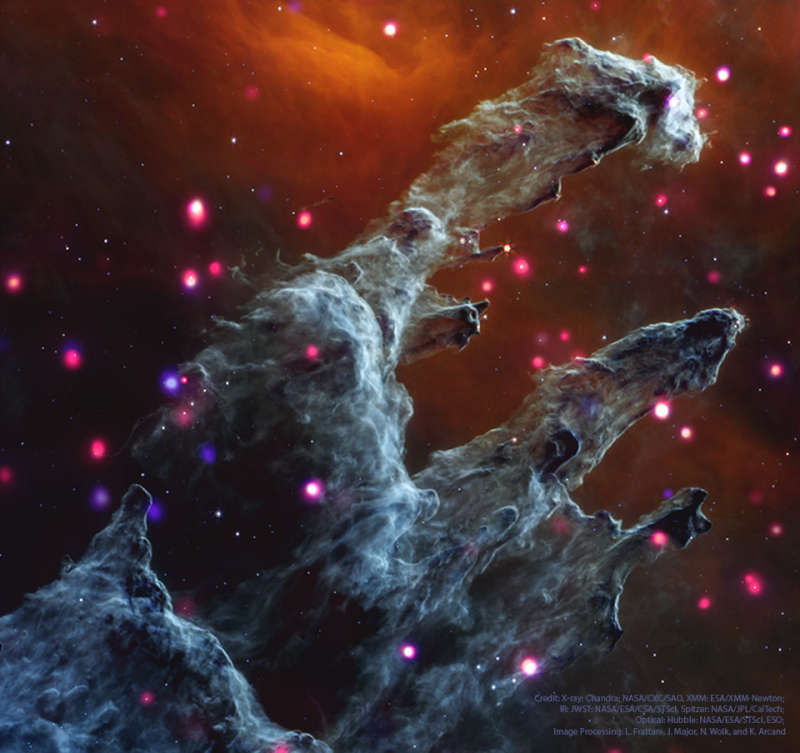Credit & Copyright: X-ray: Chandra: NASA/CXC/SAO, XMM: ESA/XMM-Newton;
IR: JWST: NASA/ESA/CSA/STScI, Spitzer: NASA/JPL/CalTech;
Visible: Hubble: NASA/ESA/STScI, ESO;
Image Processing:
L. Frattare,
J. Major, N. Wolk, and K. Arcand
Explanation:
What do the famous
Eagle Nebula star pillars look like in X-ray light?
To find out, NASA's orbiting
Chandra X-ray Observatory
peered in and through these interstellar mountains of star formation.
It was found that in
M16 the
dust pillars themselves do not emit many
X-rays,
but a lot of small-but-bright X-ray sources became evident.
These sources are shown as bright dots on the
featured image which is a composite of exposures from
Chandra
(X-rays),
XMM (X-rays),
JWST
(infrared),
Spitzer
(infrared),
Hubble
(visible), and the
VLT
(visible).
What stars produce these X-rays remains a
topic of research, but some are
hypothesized to be hot,
recently-formed, low-mass stars, while others are
thought to be hot, older, high-mass stars.
These X-ray hot stars
are scattered around the frame -- the
previously identified
Evaporating Gaseous Globules (EGGS) seen in
visible light
are not currently hot enough to emit X-rays.
1999 2000 2001 2002 2003 2004 2005 2006 2007 2008 2009 2010 2011 2012 2013 2014 2015 2016 2017 2018 2019 2020 2021 2022 2023 2024 2025 |
Yanvar' Fevral' Mart Aprel' Mai Iyun' Iyul' Avgust Sentyabr' Oktyabr' Noyabr' Dekabr' |
NASA Web Site Statements, Warnings, and Disclaimers
NASA Official: Jay Norris. Specific rights apply.
A service of: LHEA at NASA / GSFC
& Michigan Tech. U.
|
Publikacii s klyuchevymi slovami:
Eagle Nebula - M 16 - rentgenovskoe izluchenie - Tumannost' Orla
Publikacii so slovami: Eagle Nebula - M 16 - rentgenovskoe izluchenie - Tumannost' Orla | |
Sm. takzhe:
Vse publikacii na tu zhe temu >> | |
